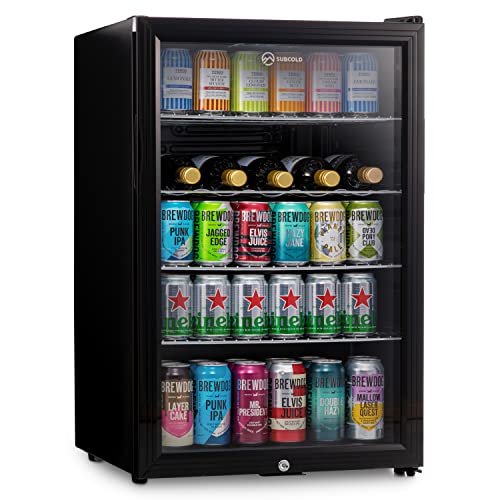The Role and Evolution of Commercial Coolers in the Modern Marketplace
In the dynamic landscape of modern commerce, the role of commercial coolers can not be overemphasized. These vital tools are the backbone of different markets, from grocery stores and corner store to restaurants and health care facilities. This short article looks into the significance of commercial coolers, their types, advancements, and the impact they have on business operations.
Introduction to Commercial Coolers
Commercial coolers, also known as commercial refrigerators, are designed to maintain a consistent and regulated temperature environment for the storage of disposable items. Unlike household refrigerators, commercial coolers are constructed to withstand heavy use and are geared up with functions that guarantee dependability and effectiveness in high-demand settings. They are vital for maintaining the quality and safety of food, beverages, and other temperature-sensitive items.
Types of Commercial Coolers
Cooled Display Cases
- Vertical Coolers: Commonly found in grocery stores and corner store, these units enable customers to view and select products quickly.
- Horizontal Coolers: Often used for showing beverages and small items, these systems can be either open or with glass doors.
Walk-in Coolers
- Walk-in Freezers: Large, room-sized units created for bulk storage of frozen items.
- Walk-in Coolers: Similar to walk-in freezers but maintain a greater temperature level, suitable for storing dairy, produce, and other perishables.
Undercounter Coolers
- Bar Coolers: Compact units developed to fit under bar counters, perfect for storing drinks and mixers.
- Preparation Coolers: Used in kitchen areas for keeping ingredients and ready foods.
Bottle Coolers
- Single-Door Coolers: Ideal for small areas, these systems are frequently used in offices and small retail settings.
- Multi-Door Coolers: Larger units with multiple compartments, suitable for high-volume sales environments.
Reach-in Coolers
- Single-Door Reach-ins: Compact and effective, these systems are perfect for small services and restaurants.
- Double-Door Reach-ins: Offer more storage area and appropriate for medium-sized operations.
Improvements in Commercial Coolers
The technology behind commercial coolers has actually advanced considerably throughout the years, leading to more effective and sustainable choices. Some noteworthy improvements include:
- Energy Efficiency: Modern coolers are created to consume less energy, reducing operational costs and environmental impact. Functions like LED lighting, high-efficiency compressors, and advanced insulation add to this.
- Smart Technology: Many commercial coolers now feature smart features, such as remote tracking, temperature alerts, and automated defrost cycles. These innovations enhance operational efficiency and item security.
- Eco-Friendly Refrigerants: The use of environmentally friendly refrigerants, such as R-290 (gas) and R-600a (isobutane), is ending up being more common, minimizing the carbon footprint of commercial coolers.
- Modification: Manufacturers are using more personalized alternatives, enabling companies to customize their coolers to particular needs, such as size, design, and features.
Effect On Business Operations
Commercial coolers play an important role in numerous aspects of business operations:
- Product Preservation: By preserving optimal temperature level conditions, coolers ensure that items remain fresh and safe for consumption, decreasing waste and improving consumer satisfaction.
- Functional Efficiency: Efficient cooling systems decrease downtime and upkeep expenses, permitting organizations to focus on other vital operations.
- Consumer Experience: Well-maintained and visually pleasing coolers can boost the shopping experience, encouraging clients to make purchases.
- Regulative Compliance: Commercial coolers help organizations meet health and security guidelines, making sure compliance and avoiding charges.
FAQs
Q: What is the difference in between a commercial cooler and a home fridge?
- A: Commercial coolers are designed for heavy use and are developed with more robust products and advanced functions to ensure dependability and effectiveness in high-demand settings. Family refrigerators, on the other hand, are designed for personal use and are not equipped to handle the exact same level of usage or storage capacity.
Q: How can I guarantee my commercial cooler is energy efficient?
- A: To guarantee energy performance, pick a cooler with an Energy Star rating, use LED lighting, maintain regular cleansing and upkeep, and consider wise features like remote monitoring and automated defrost cycles.
Q: What are the advantages of utilizing eco-friendly refrigerants in commercial coolers?
- A: Eco-friendly refrigerants, such as R-290 and R-600a, have a lower worldwide warming capacity (GWP) and ozone depletion capacity (ODP) compared to standard refrigerants. This decreases the ecological effect of commercial coolers and helps organizations meet sustainability goals.
Q: How frequently should I clean up and maintain my commercial cooler?
- A: Regular cleansing and upkeep are vital for the ideal efficiency of commercial coolers. It is advised to clean up the cooler a minimum of once a month and carry out a thorough upkeep check every six months. Glass Front Fridges includes checking the seals, cleaning the condenser coils, and ensuring the temperature settings are precise.
Commercial coolers are important in the modern marketplace, offering necessary services that make sure the quality and security of perishable goods. With improvements in innovation and a growing concentrate on sustainability, these units are becoming more effective and eco-friendly. By comprehending the different kinds of commercial coolers and their impact on business operations, owners and supervisors can make educated choices that benefit both their operations and the environment.

